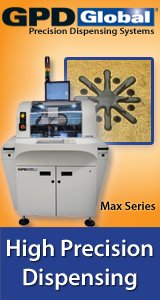Printed Circuit Board Assembly & PCB Design Forum
SMT electronics assembly manufacturing forum.
- SMTnet
- »
- Electronics Forum
- »
- New Facility Advise/Questions
New Facility Advise/Questions
Views: 4987
![]() Hi all,
Our new SMT adventure has been quite successful, an...
- Dec 17, 2019
by
kyleh04
Hi all,
Our new SMT adventure has been quite successful, an...
- Dec 17, 2019
by
kyleh04
![]()
![]()
![]() People still cut holes in the roof for process venting? Wher...
- Dec 18, 2019
by
davef
People still cut holes in the roof for process venting? Wher...
- Dec 18, 2019
by
davef
![]()
![]()
![]() I'm not sure if I follow? Was there sarcasm?
We are in Flor...
- Dec 18, 2019
by
kyleh04
I'm not sure if I follow? Was there sarcasm?
We are in Flor...
- Dec 18, 2019
by
kyleh04
![]()
![]()
![]() I worked at a similar sized facility in Texas, and we had ev...
- Dec 18, 2019
by
DWL
I worked at a similar sized facility in Texas, and we had ev...
- Dec 18, 2019
by
DWL
![]()
![]()
![]() > I worked at a similar sized facility in Texas, <...
- Dec 18, 2019
by
kyleh04
> I worked at a similar sized facility in Texas, <...
- Dec 18, 2019
by
kyleh04
![]()
![]()
![]() We were using a heller 1500 and an electrovert minipak wave ...
- Dec 18, 2019
by
DWL
We were using a heller 1500 and an electrovert minipak wave ...
- Dec 18, 2019
by
DWL
![]()
![]()
![]() Where do you live that most people aren't cutting holes in t...
- Dec 19, 2019
by
dontfeedphils
Where do you live that most people aren't cutting holes in t...
- Dec 19, 2019
by
dontfeedphils
![]()
![]()
![]() Even here at SF bay area, we also cut holes at the roof. We...
- Dec 19, 2019
by
Thomas
Even here at SF bay area, we also cut holes at the roof. We...
- Dec 19, 2019
by
Thomas
![]()
![]()
![]() So how'd you do it? Each machine has a separate hole? Or all...
- Dec 19, 2019
by
kyleh04
So how'd you do it? Each machine has a separate hole? Or all...
- Dec 19, 2019
by
kyleh04
![]()
![]()
![]() We opened 2 separate holes at the roof. 1 for the SMT 2 refl...
- Dec 19, 2019
by
Thomas
We opened 2 separate holes at the roof. 1 for the SMT 2 refl...
- Dec 19, 2019
by
Thomas
![]()
![]()
![]() Yeah, I can't imagine our AC having nearly enough head room ...
- Dec 20, 2019
by
Steve Thomas
Yeah, I can't imagine our AC having nearly enough head room ...
- Dec 20, 2019
by
Steve Thomas
![]()
![]()
![]() OK great! Seems like there's (mostly) a consensus on the duc...
- Dec 20, 2019
by
kyleh04
OK great! Seems like there's (mostly) a consensus on the duc...
- Dec 20, 2019
by
kyleh04
![]()
![]()
![]() You can use one but over spec it.
It will be a non-linear pr...
- Dec 21, 2019
by
Stephen
You can use one but over spec it.
It will be a non-linear pr...
- Dec 21, 2019
by
Stephen
![]()
![]()
![]() I would suggest having both SMT lines next to each other rat...
- Dec 23, 2019
by
Thomas
I would suggest having both SMT lines next to each other rat...
- Dec 23, 2019
by
Thomas
![]()
![]()
![]() > I would suggest having both SMT lines next to <B...
- Dec 23, 2019
by
kyleh04
> I would suggest having both SMT lines next to <B...
- Dec 23, 2019
by
kyleh04
![]()
![]()
![]() There are times you might want to move the job from one line...
- Dec 23, 2019
by
Thomas
There are times you might want to move the job from one line...
- Dec 23, 2019
by
Thomas
![]()
![]()
![]() If you're going to vent through a single exhaust/fan combo, ...
- Dec 26, 2019
by
robgd3
If you're going to vent through a single exhaust/fan combo, ...
- Dec 26, 2019
by
robgd3
![]()
![]()
![]() > If you're going to vent through a single <BR>...
- Dec 27, 2019
by
kyleh04
> If you're going to vent through a single <BR>...
- Dec 27, 2019
by
kyleh04
![]()
![]()
![]() "We would need like a 8" diameter duct for 300cfm,...
- Dec 27, 2019
by
Steve Thomas
"We would need like a 8" diameter duct for 300cfm,...
- Dec 27, 2019
by
Steve Thomas
![]()
![]()
![]() yeah...I never had airflow volume problems with Hellers.
Wh...
- Dec 27, 2019
by
robgd3
yeah...I never had airflow volume problems with Hellers.
Wh...
- Dec 27, 2019
by
robgd3
![]()
![]()
![]() > yeah...I never had airflow volume problems with <...
- Dec 28, 2019
by
kyleh04
> yeah...I never had airflow volume problems with <...
- Dec 28, 2019
by
kyleh04
![]()
![]()
![]() Kyleh04,
I worked for one place that used the vent inside t...
- Jan 06, 2020
by
Evtimov
Kyleh04,
I worked for one place that used the vent inside t...
- Jan 06, 2020
by
Evtimov
![]()
![]()
![]() We wanted to filter the exhaust from the oven and selective ...
- Jan 06, 2020
by
robgd3
We wanted to filter the exhaust from the oven and selective ...
- Jan 06, 2020
by
robgd3
![]()
![]()
![]() A lot of people also assume that the filtration is for clean...
- Jan 06, 2020
by
Steve Thomas
A lot of people also assume that the filtration is for clean...
- Jan 06, 2020
by
Steve Thomas
![]()
- SMTnet
- »
- Electronics Forum
- »
- New Facility Advise/Questions






